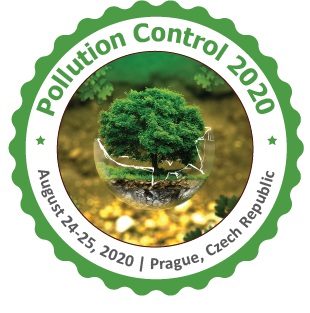
Muhawenimana Saidi
University of Cape Town,South Africa
Title: THE WATER QUALITY OF THE WOOD RIVER AND THE EFFECTS OF LAND USE
Biography
Biography: Muhawenimana Saidi
Abstract
The Wood River, located in the Old Wives Lake watershed in southern Saskatchewan, is an important water resource for people living in this area. Agriculture dominates land use in the basin, while the river receives waste water effluent from the town of Gravelbourg twice yearly. Both land usage in the basin and the dumping of municipal waste water effluent have the potential to degrade water quality in the river. To date however, the water quality of the Wood River has been relatively unstudied. The purpose of this study was threefold. First, to evaluate the water quality of the Wood River and compare it to similar river systems. Then, to evaluate the effects of nutrients on the pelagic phytoplankton in the river to determine the biological responsiveness to nutrient additions which might occur as a result of agricultural land use and municipal waste water effluent. Lastly to propose mitigative measures that could help to reduce the potential threat of increased nutrients. To determine the effect that agricultural land use and municipal waste water effluent was having on river water quality, nutrient and chlorophyll a (a measure of algal biomass) levels in the river were examined. Five sites, having different land use patterns, were chosen for this purpose. These included a reference site at a regional park not directly affected by agriculture, a site where agricultural land use dominated, a site utilized by cattle, a reservoir within the river system used for drinking water and surrounded by agriculture and finally, a site just downstream from where Gravelbourg's municipal waste is released. Nitrogen (N) and phosphorus (P) levels were high in the Wood River when compared to similar systems. The mean TP concentration for the Wood River over the two years of this study was 474 µg/L (± 246 STD) while the mean ammonia concentration was 223 µg/L (± 993 STD). These concentrations exceeded water quality guidelines. Algal biomass and nutrient concentrations were higher at sites where nonpoint source pollution from agriculture or point source pollution from sewage effluents was present. Nutrient enrichment bioassays also indicated that the algal population in the Wood River was responsive to additions of nutrients, therefore, increases in nutrients will increase algal biomass in the river. The bioassays also revealed that at the sites where agriculture and municipal waste water were present, the algal population was N limited indicating an excess of P in the river. The municipal point source of pollution had a great effect on algal biomass and these effects lasted for about three weeks after the release. Different land use patterns and municipal waste water effluent were potentially having a negative effect on the water quality of the Wood River. An examination of mitigative strategies available in the Old Wives Lake area revealed that land management tools including the implementation of soil conservation practices and riparian management could be useful in protecting the Wood River from degradation. Neither soil conservation practices nor riparian management are used extensively in the watershed, and both of these practices could help improve the water quality of the Wood River.

